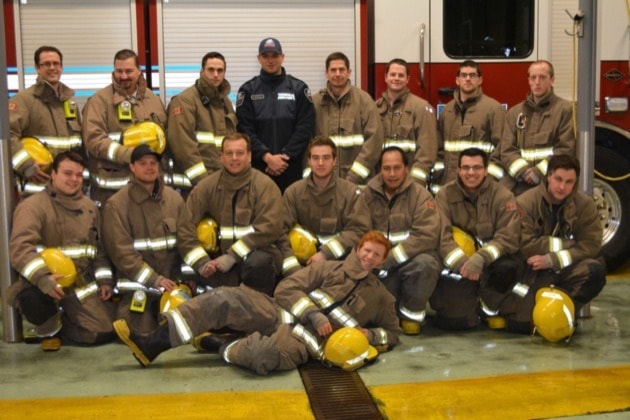The City of Terrace fire department is in need of more volunteer firefighters.
John Klie, city fire chief, told city council this at a recent meeting.
The department is short about 10 volunteers from people moving on or retiring as the age restriction is 60.
That leaves 21 volunteers in addition to the eight paid full-time firefighters and two chief officers, Klie and Dave Jephson.
“For about two years, we haven’t been able to keep up with people leaving,” said Klie.
“We do recruiting classes every spring and fall now,” he added, saying that when he arrived in 2011, the classes would have 10 or 15 people but now only have three or four.
Klie believes that the reason for the decrease in volunteers could be that many young men get jobs outside of town.
And the shortage of volunteer firefighters is not just here in Terrace but across Canada and the U.S., he said.
“At fire chief and volunteer conventions, it’s a topic of concern and interest,” said Klie.
When he took over as fire chief here, the department still had five or six members with 25 to 30 years of experience but now there’s only two or three.
The average experience level is five or six years and it’s really a newer department, Klie added.
“It’s a huge disadvantage,” said Klie.
That’s because the remaining volunteers are asked to do more training, come in more often than once a week and take on more responsibility, which a lot of them find stressful, he explained.
If they’re single, that’s OK, but more than three-quarters of the volunteers are married with children and it’s hard on everyone’s life, Klie added.
For those who volunteer, all the training is done at the fire department and all they’re asked to do is whether they’re committed and to pass a physical fitness test.
“If you’re in shape, no matter if you’re male or female, you pass,” said Klie, adding that the department only has one female volunteer firefighter right now.
“Lots of people do not pass on the first time because they do not know what to expect. We give them three weeks, a chance to get in shape and come back and 80 per cent do pass.”
Applicants aren’t required to run or carry heavy weights anymore but they put on gear and have to do some job activities successfully.
The first time they put on the Scott Pack, the breathing apparatus to help them breathe in fires, which is an extra 25 or 30 pounds, it can be heavier than expected, he said.
“At one time, they used to make you take 150 pounds to put over your shoulder, now you can drag it. We prefer to drag it because it takes away any tripping hazard,” said Klie, adding that a lot of people would fail if they had to pick up and carry 150 pounds.
“When you look at rescuing somebody, almost 90 per cent of the time you’re dragging them anyway,” he said about whether a person needing to be rescued would be dragged or carried.
Training is done one day a week on Tuesday evenings for two hours and when people start volunteering, they’re asked to give up three or four weekends, Friday night, Saturday and Sunday, he said.
They’re trained to a basic level so they can work on the exterior of a fire and help.
That means putting on gear and the breathing apparatus, learning how to advance the fire hose line, how to properly spray, how to stay down, how to crawl with a hose nozzle so when they do get to the point of going into the building, the only new thing is that it’s hot, he said.
Putting on the face piece restricts your breathing and visibility so that is a whole training exercise by itself, said Klie.
Another learning curve for people is working as a team and taking the leadership on the hose team, he added. Volunteers are also trained to be first responders so they can go out to assist the ambulance crews.
Then there are special practices sometimes on Wednesdays during the day and special training on another weekend so they can do live fire burns or confined space training and then do more than being on the exterior in a real fire, he added.
“It is a big commitment,” said Klie.
The next training session for volunteers will be in the spring. A date has yet to be set.
